Vintage Treasures: The Med Series by Murray Leinster
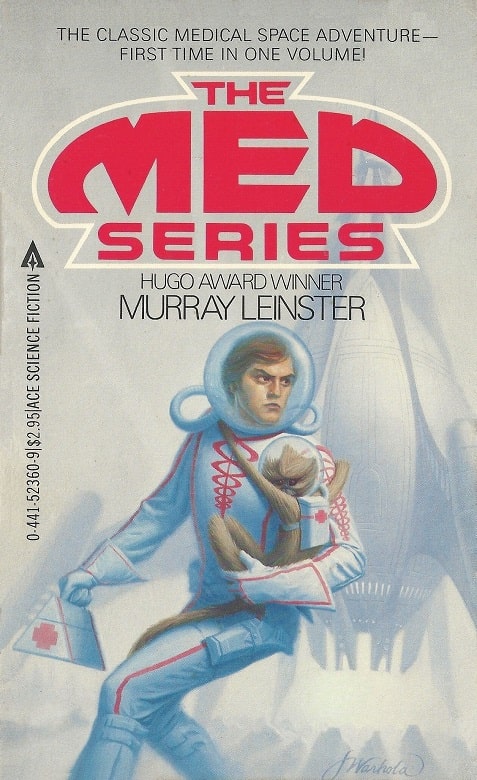 |
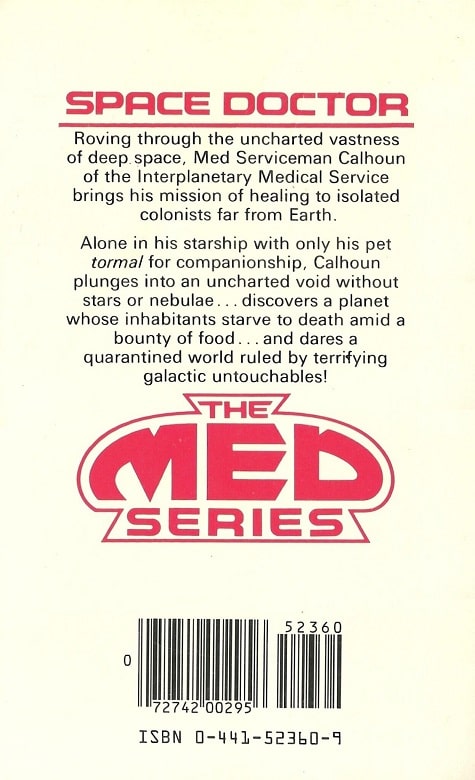 |
The Med Series (Ace, May 1983). Cover by James Warhola
For most of its life John W. Campbell’s Astounding Science Fiction was the most important SF magazine on the stands. It was the beating heart of the genre in a way that’s tough to comprehend today, in a market that’s grown far beyond print.
Campbell made his mark by discovering, nurturing, and publishing the most important writers of his day. But — quite cleverly, I think — he also cultivated lifetime readers by making Astounding home to exciting and highly readable series, many of which were later successfully packaged as bestselling books. Readers of Astounding knew they were getting an early look at the titles everyone would eventually be talking about.
A study of the major SF series launched in Astounding would fill several volumes, but they include Frank Herbert’s Dune, Asimov’s Foundation and Robot tales, Anne McCaffrey’s Dragonriders of Pern, H. Beam Piper’s Paratime and Federation/Empire sagas, Gordon R. Dickson’s Dorsai!, Poul Anderson’s Psychotechnic League, James Schmitz’s Telzey Amberdon and The Hub tales, and countless others.
One of my favorite story cycles from the Campbell era of Astounding was Murray Leinster’s The Med Series, the tales of the intrepid doctors of the Interplanetary Medical Service “roving through the uncharted vastness of deep space.” They were eventually repackaged in a handful of paperbacks that are long out of print, but still fondly remembered by a few of us old timers.
[Click the images to mediate on larger versions.]
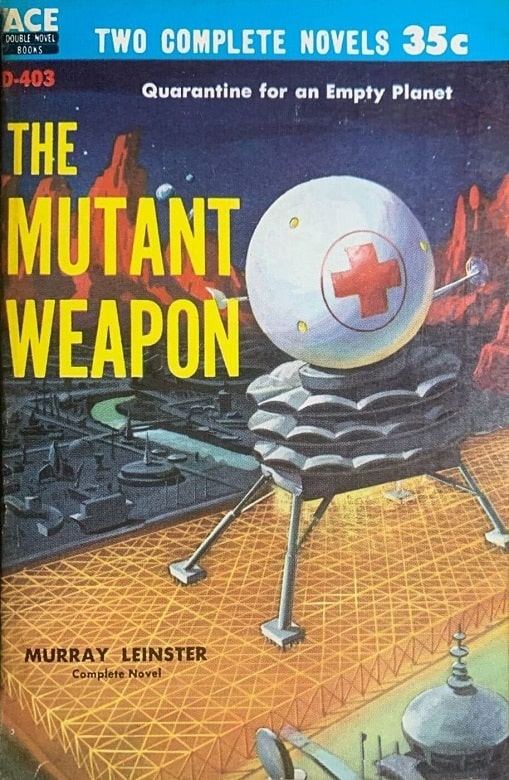 |
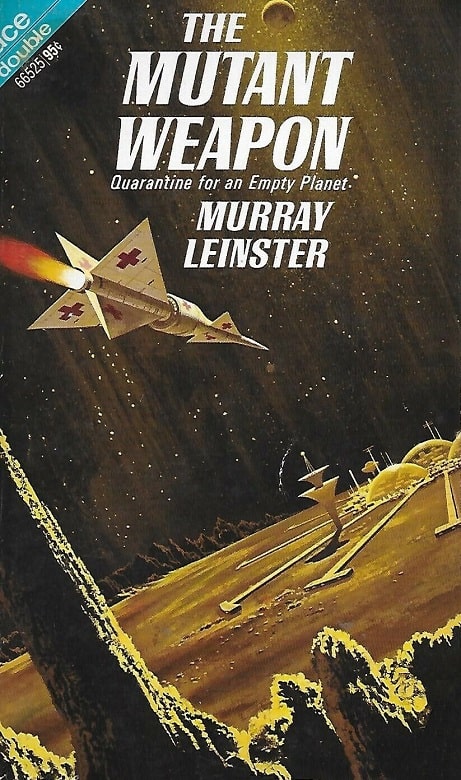 |
The Mutant Weapon, one half of a Murray Leinster Ace Double with The Pirates of Zan
(Ace, 1959 and 1971). Covers by Richard Powers and Dean Ellis
Leinster’s first story in what would become the Med Series was “Ribbon in the Sky,” published in the June 1957 issue of Astounding Science Fiction. It was followed by seven more over the next decade, all but two of them novellas.
“Ribbon in the Sky” (Astounding Science Fiction, June 1957)
“The Mutant Weapon” (Astounding Science Fiction, August 1957) — novella
“The Grandfathers’ War” (Astounding Science Fiction, October 1957) — novella
“Pariah Planet” (Amazing Stories, July 1961) — novella, published in paperback as This World Is Taboo (1961)
“Tallien Three” (Analog Science Fact/Science Fiction, August 1963) — novella, originally published as “The Hate Disease”
“Med Ship Man” (Galaxy Magazine, October 1963)
“Plague on Kryder II” (Analog Science Fact/Science Fiction, December 1964) — novella
“Quarantine World” (Analog Science Fiction/Science Fact, November 1966) — novella
See some of the issues below.
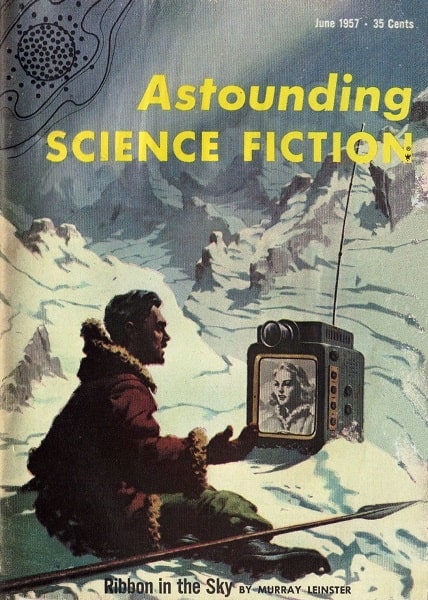 |
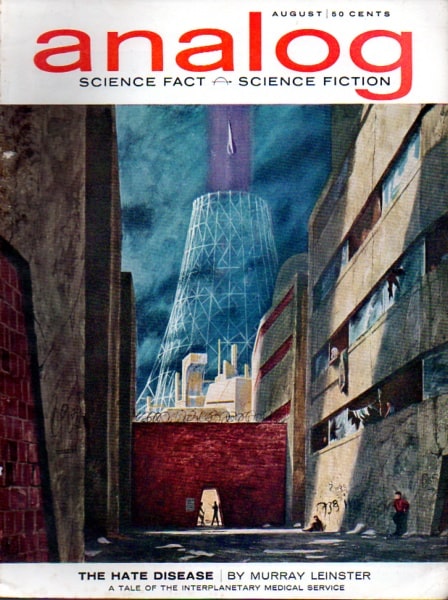 |
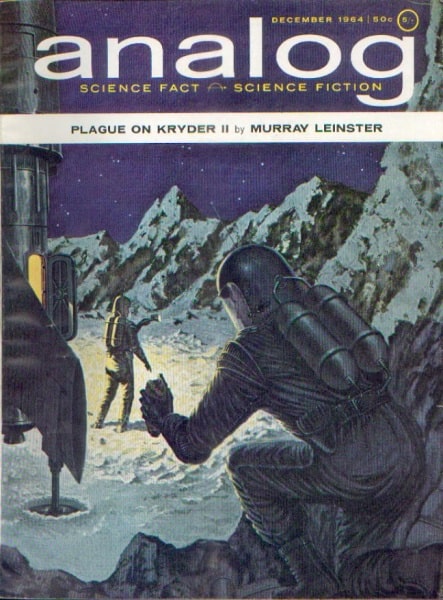 |
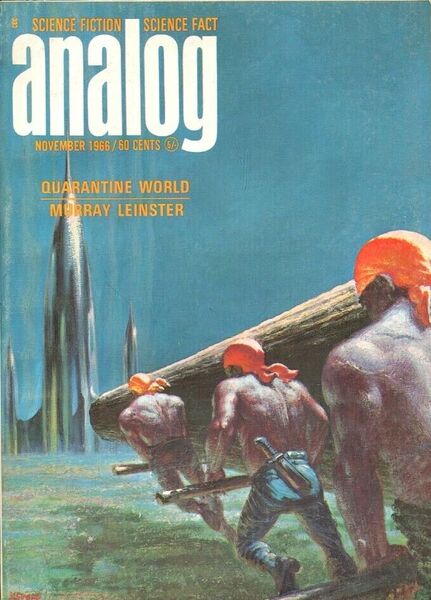 |
Some of the original magazine appearance of the Med Series tales:
Astounding Science Fiction, June 1957, and three issues of Analog:
August 1963, December 1964, and November 1966. Covers by H. R. Van Dongen,
John Schoenherr, Robert Swanson, and Kelly Freas. Click for bigger images.
The 8-story series was popular enough that it was packaged and re-packaged into no less than seven different collections and standalone volumes over the next four decades.
The Mutant Weapon (Ace, 1959) — Half of an Ace Double, with The Pirates of Zan
This World Is Taboo (Ace, 1961) — Paperback version of “Pariah Planet”
Doctor to the Stars (Pyramid Books, March 1964) — Contains three stories
SOS From Three Worlds (Ace, 1967) — Contains the last three uncollected stories
The Med Series (Ace, May 1983) — Contains The Mutant Weapon, This World Is Taboo, and SOS From Three Worlds
Quarantine World (Carroll & Graf, July 1992) — Contains The Mutant Weapon and SOS From Three Worlds
Med Ship (2002) — Omnibus volume containing The Mutant Weapon, This World is Taboo, Doctor to the Stars,
and SOS From Three Worlds — all eight stories in the series
These volumes had covers from Richard Powers, Ed Valigursky, John Schoenherr, Jack Gaughan, Dean Ellis, and others (see below).
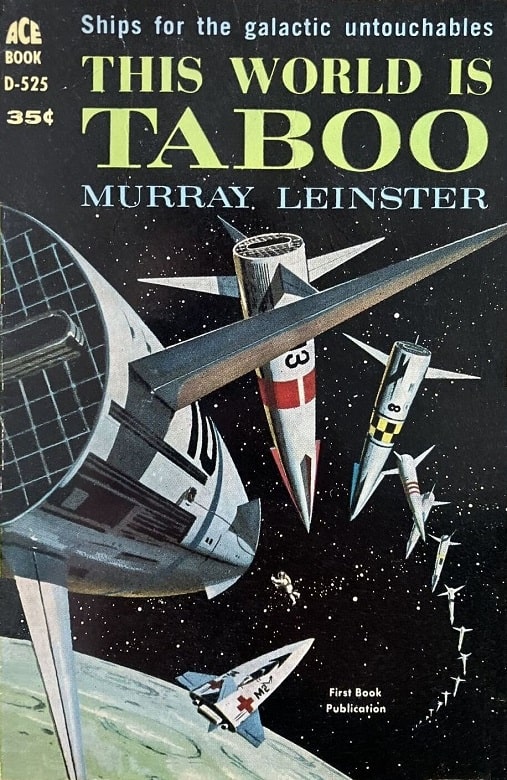 |
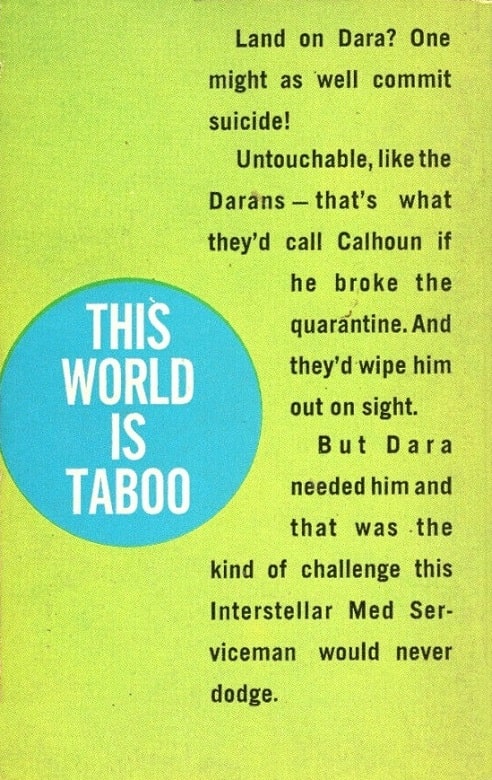 |
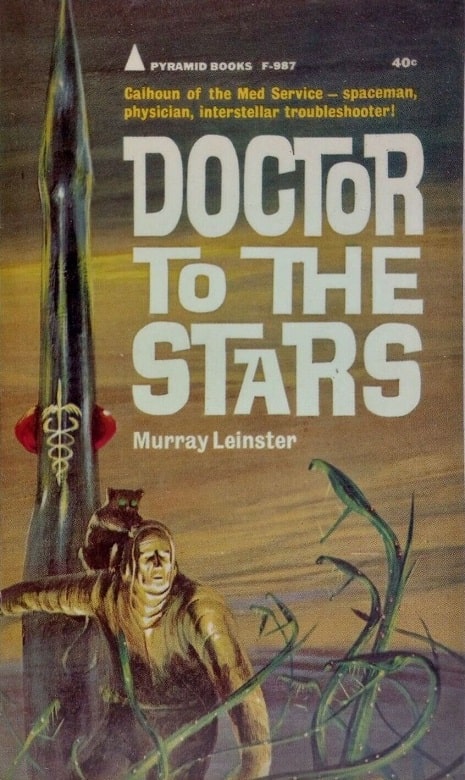 |
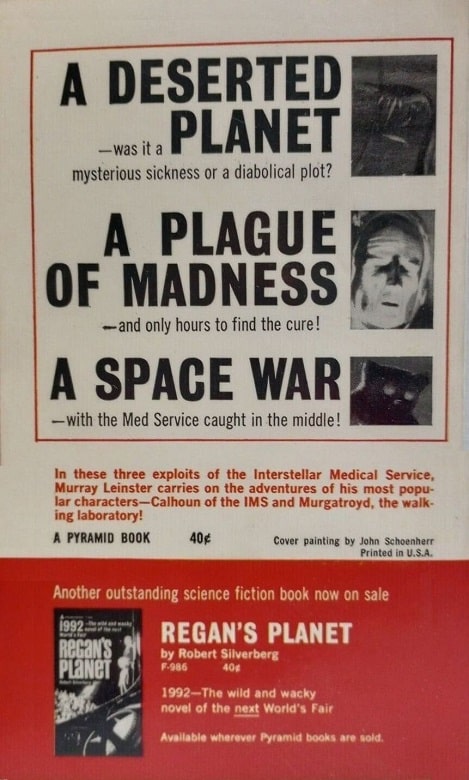 |
This World is Taboo and Doctor to the Stars (Ace, 1961, and Pyramid
Books, March 1964). Covers by Ed Valigursky and John Schoenherr
Doctor to the Stars contained two novellas, “The Grandfathers’ War” and “Tallien Three,” plus the shorter novelette “Med Ship Man.” It was published in paperback by Pyramid Books in March 1964.
“The Grandfathers’ War” (1957)
“Med Ship Man” (1963)
“Tallien Three ” (1963)
SOS From Three Worlds collected two more novellas, “Plague on Kryder II” and “Quarantine World,” plus “Ribbon in the Sky.” It appeared as an Ace paperback in 1967.
“Plague on Kryder II” (1964)
“Ribbon in the Sky” (1957)
“Quarantine World” (1966)
The Med Series, published by Ace in 1983, contains The Mutant Weapon, This World Is Taboo, and SOS From Three Worlds, a total of four novellas and one novelette.
“The Mutant Weapon” (1957)
“Plague on Kryder II” (1964)
“Ribbon in the Sky” (1957)
“Quarantine World” (1966)
“This World Is Taboo” (1961)
The Med Series was the most complete collection of Med Service tales published in the 20th Century, and would not be superseded until the release of the excellent Med Ship omnibus volume from Baen in 2002.
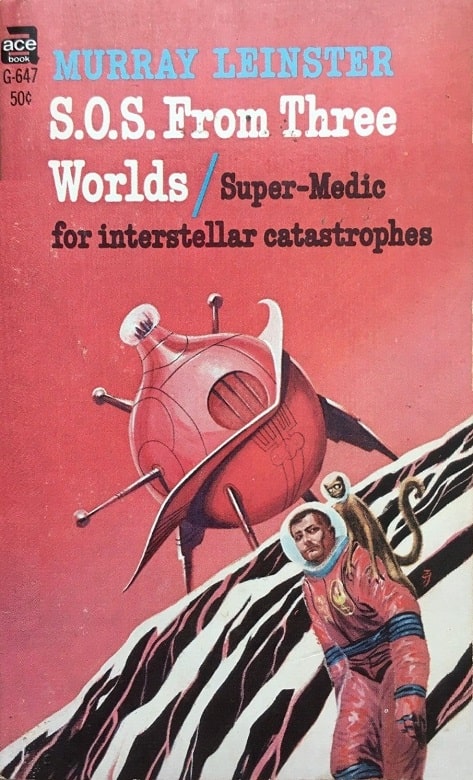 |
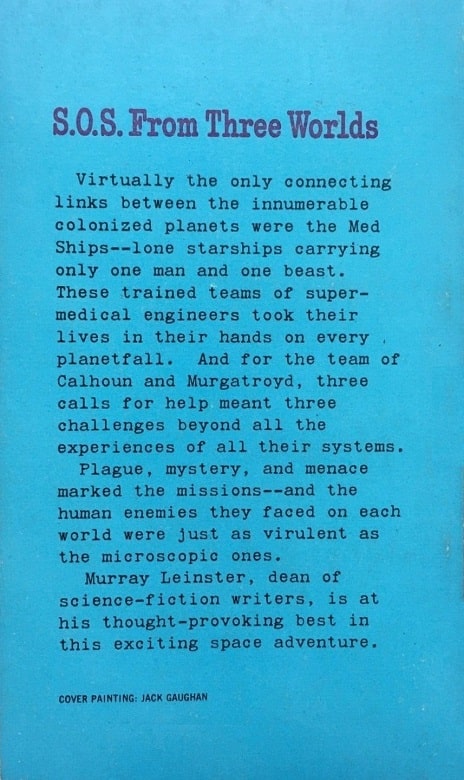 |
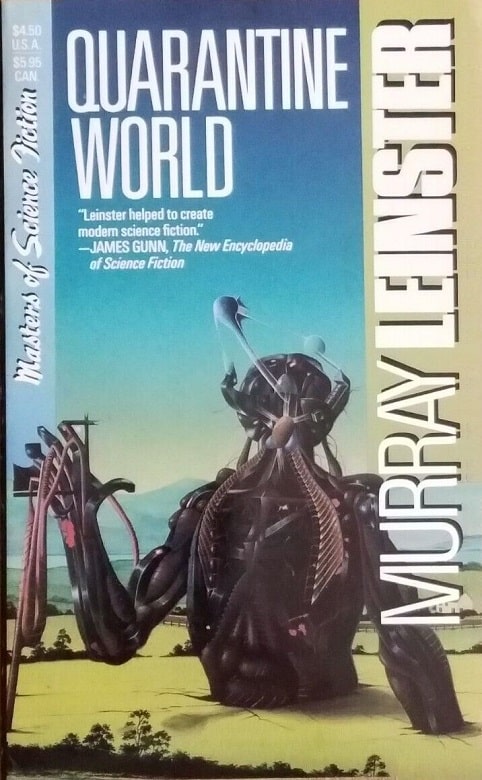 |
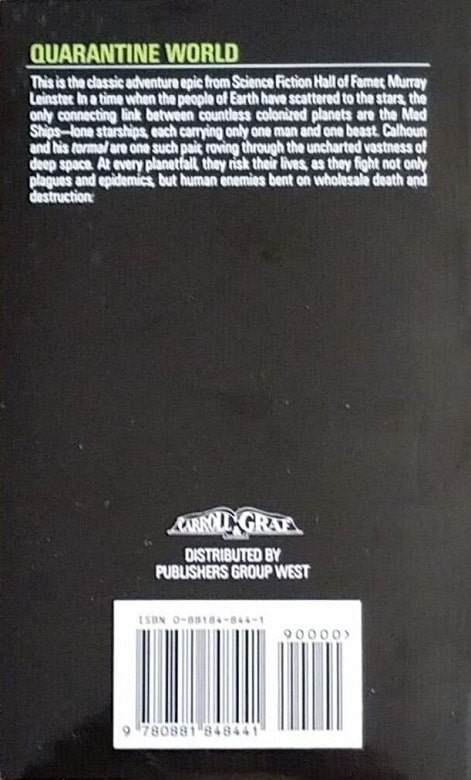 |
Two Med Service collection: SOS From Three Worlds and Quarantine World
(Ace, 1967, and Carroll & Graf, July 1992). Covers by Jack Gaughan and Peter Goodfellow
Quarantine World contains the novella The Mutant Weapon plus the complete contents of SOS From Three Worlds.
“The Mutant Weapon” (1957)
“Plague on Kryder II” (1964)
“Ribbon in the Sky” (1957)
“Quarantine World” (1966)
Med Ship, the fabulous Baen omnibus volume edited by Eric Flint and Guy Gordon, contains The Mutant Weapon, This World is Taboo, Doctor to the Stars, and SOS From Three Worlds — all eight stories in the series, plus a fine afterword by the editors. It was the first time any of the Med Service tales appeared in hardcover.
“Med Ship Man” (1963)
“Plague on Kryder” (1964)
“The Mutant Weapon” (1957)
“Ribbon in the Sky” (1957)
“Tallien Three” (1963)
“Quarantine World” (1966)
“The Grandfathers’ War” (1957)
“Pariah Planet” (1961)
Editors’ Afterword, by Eric Flint and Guy Gordon
Med Series was the first of three omnibus Leinster editions from Eric Flint at Baen. The other two are Planets of Adventure and A Logic Named Joe. All three are well worth tracking down.
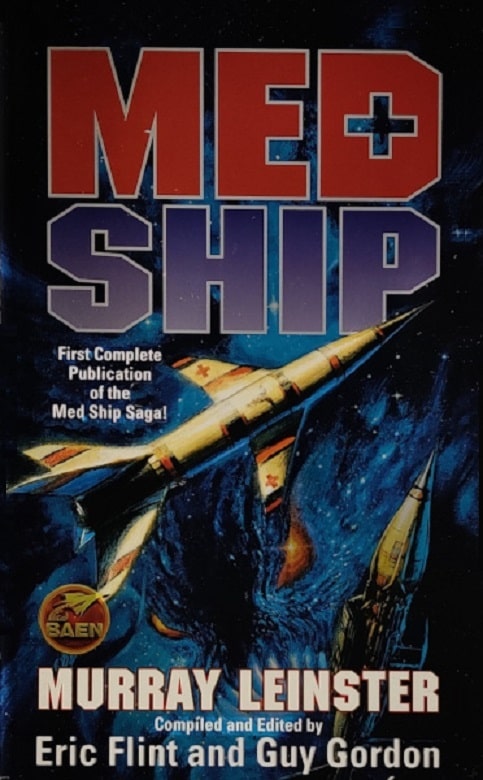 |
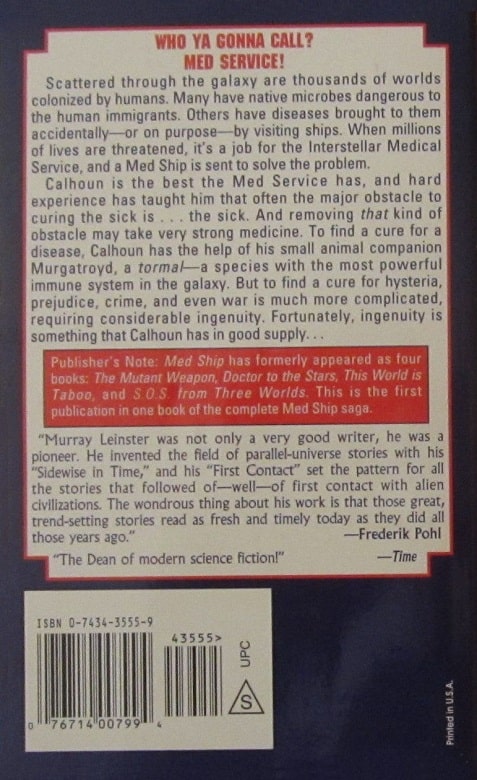 |
The complete omnibus edition: Med Ship (Baen, August 2002). Cover by Bob Eggleton
The Med Series still has lots of fans. Alan Brown is one of them; here’s an excerpt from his 2020 feature at Tor.com, Physician as Paladin, Facing Plague and Pandemic: Med Ship., written at the height of the COVID pandemic.
In the mid-20th century, Murray Leinster, one of the most entertaining and creative of science fiction’s early masters, imagined a cadre of uniformed public health officers who travel the stars like the knights errant of ancient legend, helping the needy and righting wrongs. At this moment in time, as we face a worldwide pandemic, these tales and the lessons they contain have suddenly become very timely…
Med Ship… introduces us to Doctor Calhoun, a uniformed Med Service officer, and his alien companion, a “tormal” called Murgatroyd. Together, they travel between the stars on Med Ship Aesclipus Twenty (Aesclipus, more often spelled “Asclepius,” is the Greek god of medicine), a tough and capable vessel that displaces fifty tons… Humanity is the sole intelligent species in this universe, and there are plenty of new planets to colonize. The stories are episodic, like many literary and television series of the era, with no overarching story arc and each tale independent…
“Ribbon in the Sky” was published in Astounding in June 1957, making it the first of the Med Ship stories to appear in print. Calhoun arrives in unknown territory due to someone having programmed his navigation system improperly. He finds a planet surrounded by a ring of sodium dust to alter its climate, and discovers a lost colony, split into three warring cities, all believing that the others will infect them with a deadly plague. There is a Romeo and Juliet relationship between young lovers from two cities, which suggests the situation is not what people think…
“Tallien Three” (originally published as “The Hate Disease”) appeared in Analog in August 1963. Calhoun’s arrival is interrupted by an attempt to shoot down Aesclipus Twenty with a missile. The colony is dealing with what appears to be a disease causing insanity and hatred in its victims. But it is an odd sort of insanity, one which allows its victims to cooperate with each other and accomplish complex tasks, as demonstrated by that hostile missile launch. The factor causing the disease to spread turns out to be quite clever, the local officials are unreliable, and Calhoun again rises to the occasion.
The story “Quarantine World” (from Analog, November 1966) is one I remember well, along with the Kelly Freas cover adorning the issue… Calhoun has arrived at the planet Lanke, finds the medical situation a bit too perfect, and smells a rat. When a disease-stricken terrorist attacks a meeting, the hidden problems are revealed. It seems that Lanke is at odds with a planet that has been quarantined because they perceive it to be full of disease. The leaders of Lanke had kept this situation from Calhoun because they feared the economic damage a quarantine of both worlds might bring. Interestingly enough, no one suffers from the illness on its planet of origin…
The final story, “Pariah Planet,” from Amazing, July 1961, is a tale of prejudice as much as disease. Calhoun finds himself in an area where the Med Service has fallen into disarray, visiting a planet, Weald, that has not been seen for quite some time. The people are very defensive, terrified of a plague that has marked its victims on the nearby world Dara as “blueskins.” For years, Weald’s leaders have used the blueskin threat to scare their inhabitants into following government direction, uniting against a common “enemy.” Weald is frightened enough to consider genocide in order to defend themselves. Dara, on the other hand, is wracked by famine, with its people desperate enough to resort to violence. Again, Calhoun must not only deal with disease, but also defuse the situation and avoid a full-blown war….
I certainly enjoyed my timely revisit to the Med Ship series. It has its dated elements, but Calhoun and Murgatroyd are engaging protagonists and the medical puzzles Leinster constructed are clever and engaging. The stories are well worth seeking out.
Check out the other Baen omnibus volumes below.
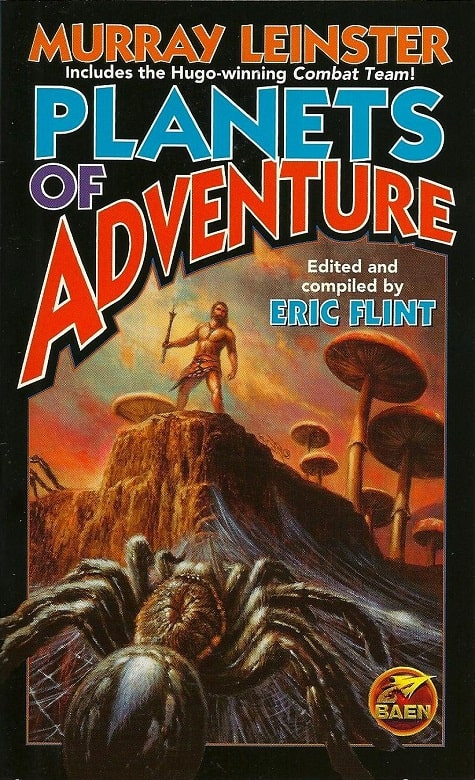 |
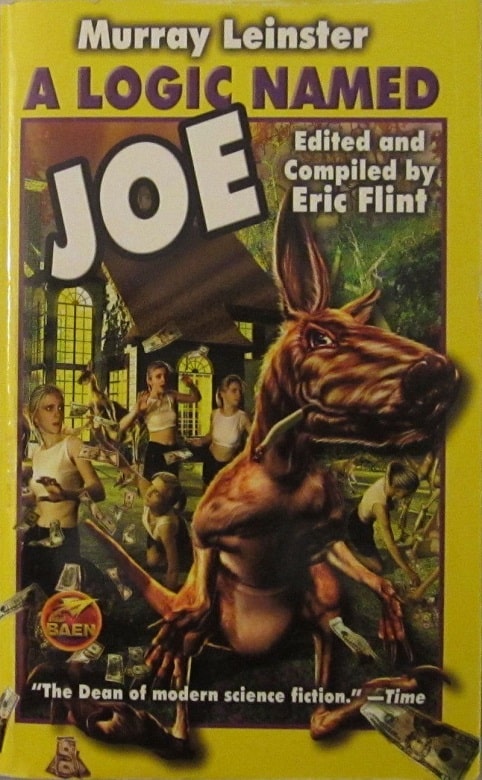 |
Other Leinster omnibus editions from Baen: Planets of Adventure and A Logic Named Joe
(Baen, October 2003 and June 2005). Covers by Bob Eggleton and Kurt Miller
Here’s the publishing details for the omnibus editions.
The Med Series (Ace Books, 380 pages, $2.95 in paperback, May 1983) — Cover by James Warhola
Med Ship (Baen Books, 634 pages, $10.99 in hardcover/$7.99 paperback, August 2002) — cover by Bob Eggleton
Our previous coverage of Murray Leinster includes:
A Sense Of Wonder by John Wyndham, Jack Williamson and Murray Leinster (2020)
Germ Warfare, Sentient Planets, and Dark Age Alchemy: The Best of Murray Leinster by James McGlothlin (2019)
Birthday Reviews: Murray Leinster’s “Pipeline To Pluto” by Steven H Silver (2018)
The Omnibus Volumes of Murray Leinster (2015)
The Brain-Stealers (2015)
Explore the Best of Early SF With Science Fiction From the Great Years (2015)
Murray Leinster and the Moon by Tony Den (2015)
Gateway to Elsewhere (2014)
The Best of Murray Leinster, edited by Brian Davis (2014)
Planets of Adventure (2014)
The Pirates of Zan (2013)
When Aliens are Delicious: Murray Leinster’s “Proxima Centauri” and the Creepy Side of Pulp SF (2013)
The Best of Murray Leinster (2013)
Murray Leinster’s “Runaway Skyscraper” by Ryan Harvey (2011)
Fiction Excerpt: “The Fifth-Dimension Catapult” (2005)
See all our recent Vintage Treasures here.
I have the three Baen omnibus editions of Leinster’s works, but I must have missed that Med Ship had a hardcover release. I’m going to have to look it up as I’d like a little more durable copy as they’re good stories and worth having around.
Some of the earliest sf series that I can remember reading involved medicine in space, like James White with his Sector General stories, or Alan Nourse (who was a physician as his day job), and these stories by Mr. Leinster. Aside from a few rare examples in the more recent past (Vonda McIntyre’s Dreamsnake, or Elizabeth Ann Scarborough’s The Healer’s War), the sf medicine tradition seems to have disappeared.